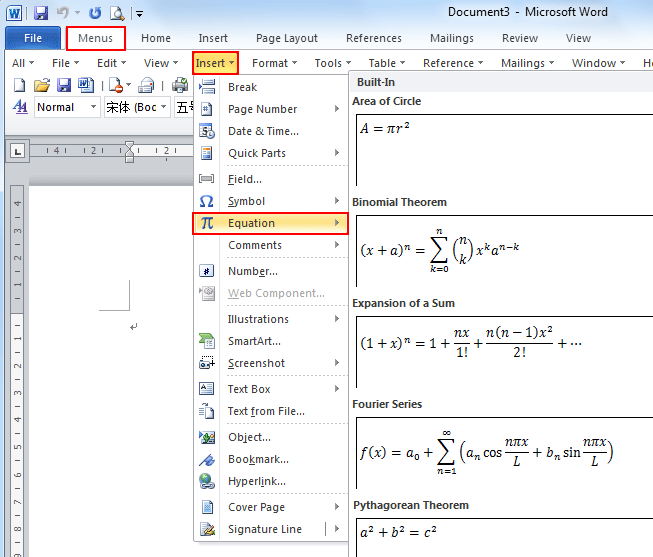
Word 2010 comes with a group of table templates for you to use and quickly customize to fit your needs. Look at the example below to see the final result. In the dialogue, select how many rows and columns you want, and then tell Word to separate the text at commas (frankly, it's just easiest.) In this example, we've selected three rows and three columns. Now select the text, click the Insert Table tool and select "Convert Text To Table." An example of the text might look like this: Simply place a comma between the text you want to put into a column and place a paragraph where you want to begin a new row. That's how you tell Word to separate the text into individual cells. To do this, you'll have to carve up the text into columns and rows using commas and new paragraphs. This is especially handy if you've already written information that you think would be more effectively conveyed in a table. Interested in learning more? Why not take an online Word 2010 course? You will be able to change any attributes of that text, too, and even apply a Quick Style. Adding Text to a TableĪdding text to a table is as easy as clicking into a cell and then typing. You can select an entire table using either of those methods. For instance, to highlight cells in the following example, we clicked on the cell in the first row and column, and, holding the left mouse button, dragged our pointer through the cell in the 2 nd row, 2 nd column. You can also click and hold on a cell, then drag the mouse through the cells you want to select. For instance, if you want to select column three in the example above, you'd have to right click any of the cells in the last column. This will select whatever row or column that particular cell is a part of. You can right click on a cell and choose SELECT > ROW or SELECT > COLUMN. There are two ways to select rows and columns. A selected cell will be highlighted in blue as in the following example. To select an individual cell, right click on the cell and then choose SELECT > CELL. You can select and change the attributes of any row, column, or individual cell. You can even draw cells within cells as I've done in the following example.Ĭlick and hold the left mouse button, drag the cell into the desired size and shape, and then release. Your mouse pointer will transform into a pencil tool and you'll be able to draw individual cells anywhere in your document. To do this, click the Insert Table tool and select Draw Table. This is particularly helpful when using tables to create complex page layouts. If you know your table is not going to be uniform (regularly sized columns and rows), you can "draw" a table. If you don't want this to happen, you can select "Fixed column width" and set a fixed value. A table is automatically entered into your document.īy default, the column width will adjust automatically to fit the text and objects you insert into a cell.

Select your preferences in the AutoFit behavior section and then click OK. In this example, there are going to be 5 columns, and 2 rows. It looks like this.įrom here you can select the number of rows and columns.

Now go back to the Insert tab, click the Insert Table tool, and select "Insert Table" instead of dragging your mouse over the boxes (which really represent cells, as we learned a second ago.)Ī dialogue launches in the center of your screen. Once again, we're going to move the cursor to the point in the document where we want the table to appear. So now that we've identified the parts of a table, let's take a look at the other ways in which we can add them. For instance, in our example Row 1, Column 2 might be expressed as 1b. In a program such as Excel, the rows are usually expressed in numbers while the columns are expressed in letters. In this example, the columns are numbered and the middle column (2.) is highlighted.

In the example below, the rows are numbered from one to three and the 1 st row is highlighted.Ĭolumns go from left to right. So let's identify the parts.Įach box is called a "Cell." There are 9 cells in the example above. To insert this simple table, click the mouse. See where it says "3x3 Table"? Cool, huh? And convenient. We know that, without having to count each box, because Word tells us with the text right above the boxes. Here's an example of a 3 X 3 table using Insert Table:


 0 kommentar(er)
0 kommentar(er)
